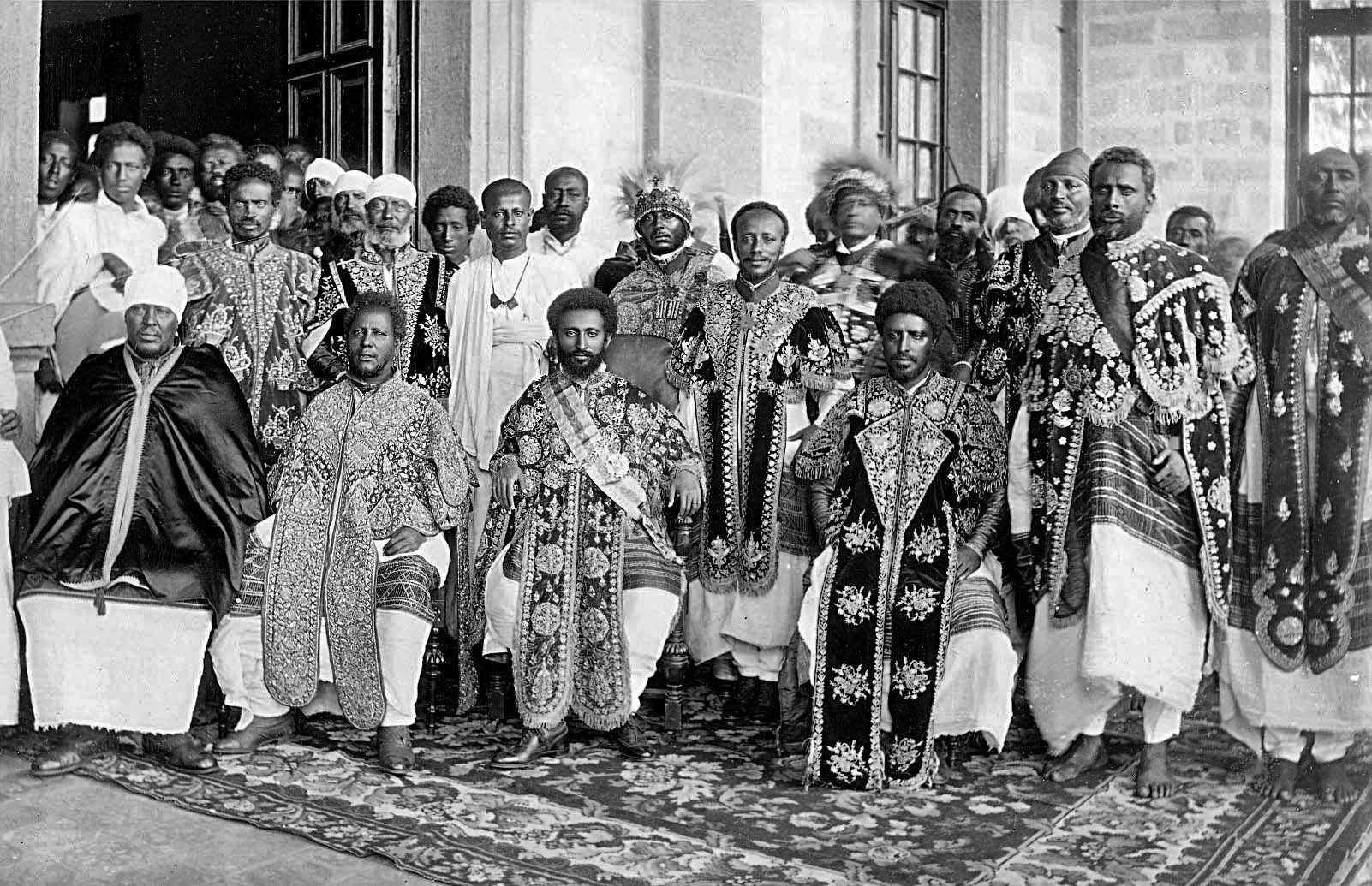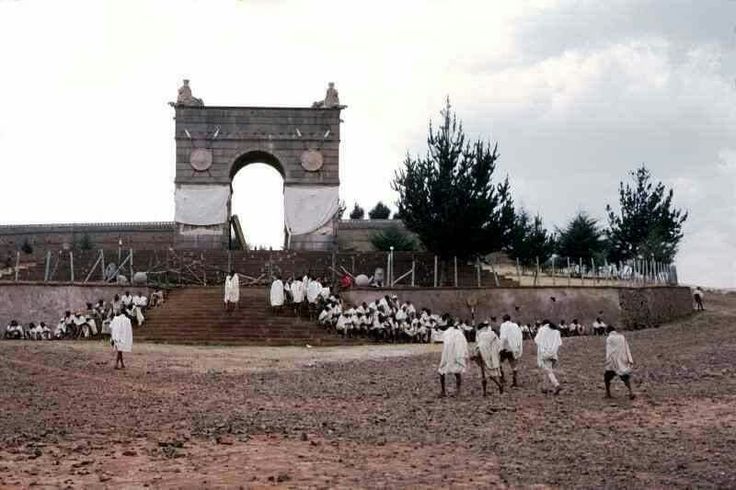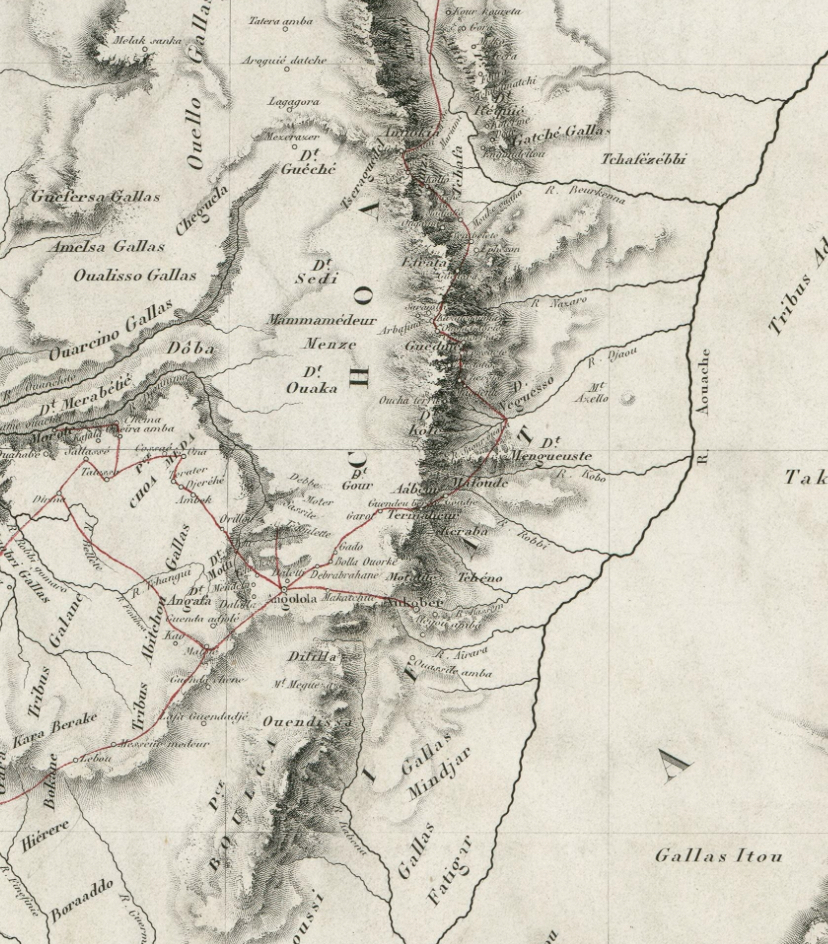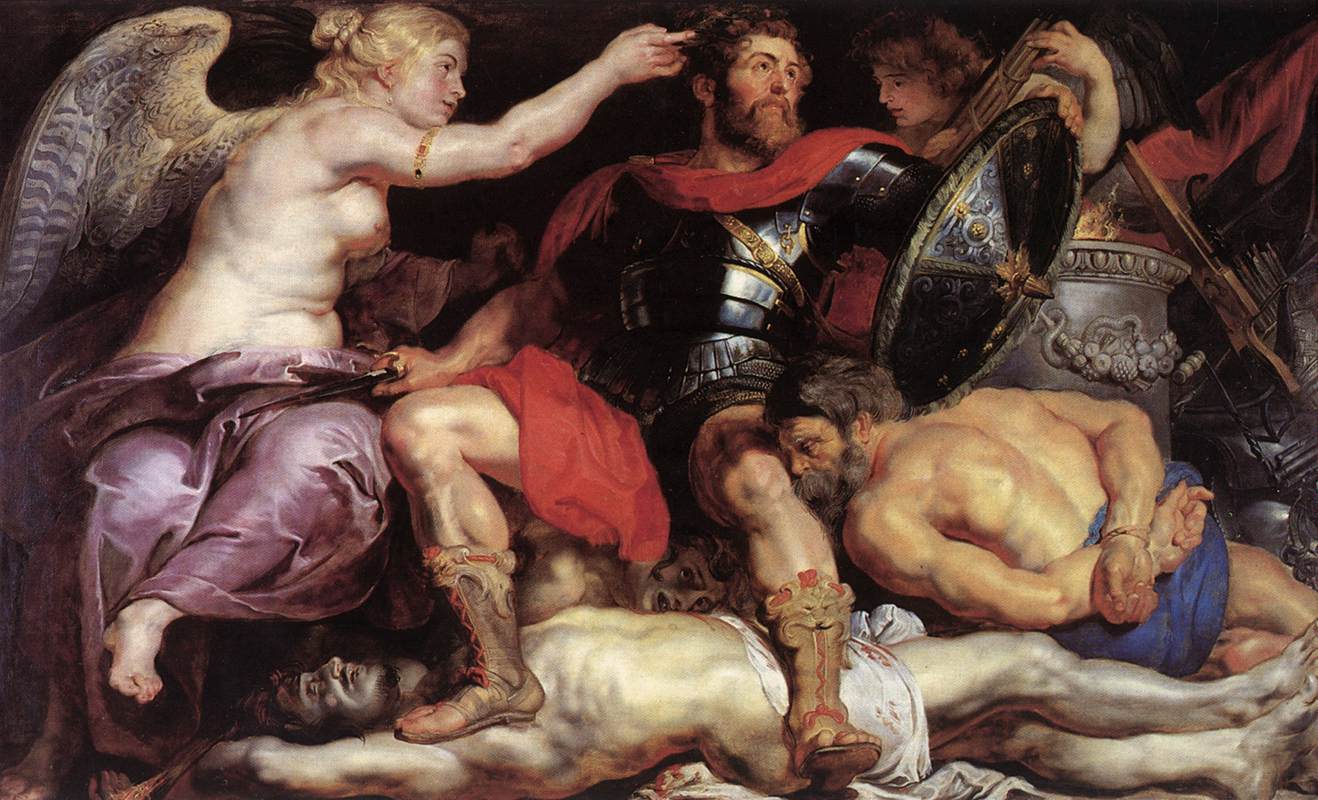|
Amda Seyon I
Amda Seyon I, also known as Amda Tsiyon I ( , , "Pillar of Zion"), throne name Gebre Mesqel (ገብረ መስቀል , "Servant of the Cross"), was Emperor of Ethiopia from 1314 to 1344 and a member of the Solomonic dynasty. He is best known in the so-called chronicles as a heroic warrior against the Muslims, and is sometimes considered to have been the founder of the Ethiopian Empire. According to multiple commentators, Amda Seyon's chronicles appear to be highly unreliable as it was written a century after his reign and conflates conflicts involving successive Ethiopian emperors. Most of his wars were against the Muslim sultanates to the southeast, which he was able to fight and generally defeat, and substantially enlarge his kingdom by gradually incorporating a number of smaller states. His supposed conquests of Muslim borderlands were said to have greatly expanded Christian territory and power in the region, which were maintained for centuries after his death. Amda Seyon a ... [...More Info...] [...Related Items...] OR: [Wikipedia] [Google] [Baidu] |
Ethiopian Aristocratic And Court Titles
Until the end of the Ethiopian Empire, Ethiopian monarchy in 1974, there were two categories of nobility in Ethiopia and Eritrea. The Mesafint ( , modern transcription , singular መስፍን , modern , "prince"), the hereditary royal nobility, formed the upper echelon of the ruling class. The Mekwanint ( , modern , singular መኰንን , modern or , "officer") were the appointed nobles, often of humble birth, who formed the bulk of the aristocracy. Until the 20th century, the most powerful people at court were generally members of the ''Mekwanint'' appointed by the monarch, while regionally, the ''Mesafint'' enjoyed greater influence and power. Emperor Haile Selassie greatly curtailed the power of the ''Mesafint'' to the benefit of the ''Mekwanint'', who by then were essentially coterminous with the Ethiopian government. The ''Mekwanint'' were officials who had been granted specific offices in the Abyssinian government or court. Higher ranks from the title of ''Ras'' descendi ... [...More Info...] [...Related Items...] OR: [Wikipedia] [Google] [Baidu] |
Excommunication
Excommunication is an institutional act of religious censure used to deprive, suspend, or limit membership in a religious community or to restrict certain rights within it, in particular those of being in Koinonia, communion with other members of the congregation, and of receiving the sacraments. It is practiced by all of the ancient churches (such as the Catholic Church, Oriental Orthodoxy, Oriental Orthodox churches and the Eastern Orthodoxy, Eastern Orthodox churches) as well as by other Christian denominations; however, it is also used more generally to refer to similar types of institutional religious exclusionary practices and shunning among other religious groups. The Amish have also been known to excommunicate members that were either seen or known for breaking rules, or questioning the church, a practice known as shunning. Jehovah's Witnesses use the term disfellowship to refer to their form of excommunication. The word ''excommunication'' means putting a specific indiv ... [...More Info...] [...Related Items...] OR: [Wikipedia] [Google] [Baidu] |
Gojjam
Gojjam ( ''gōjjām'', originally ጐዛም ''gʷazzam'', later ጐዣም ''gʷažžām'', ጎዣም ''gōžžām'') is a historical provincial kingdom in northwestern Ethiopia, with its capital city at Debre Markos. During the 18th century, Gojjam's western neighbors were Agawmeder in the southwest and Qwara in the northwest. Agawmeder, never an organized political entity, was gradually absorbed by Gojjam until it reached west to the Sultanate of Gubba; Juan Maria Schuver noted in his journeys in Agawmeder (September 1882) that in three prior months, "the Abyssinians considerably advanced their frontier towards the West, effacing what was left of the independent regions." Gubba acknowledged its dependence to Emperor Menelik II in 1898, but by 1942 was absorbed into Gojjam. Dek Island in Lake Tana was administratively part of Gojjam until 1987. The capital city is Bahir Dar. History The earliest recorded mention of Gojjam was during the medieval period, in a note in a ... [...More Info...] [...Related Items...] OR: [Wikipedia] [Google] [Baidu] |
Ifat (historical Region)
Ifat (Harari language, Harari: ኢፋት; ; Somali Language, Somali: Awfat) also known as Yifat, Awfat or Wafat was a historical Muslim region in the Horn of Africa. It was located on the eastern edge of Shewa. Geography According to thirteenth century Arab geographer Ibn Sa'id al-Maghribi, Ifat was alternatively known as ''Jabarta''. In the fourteenth century Ibn Fadlallah al-Umari, Al Umari mentioned seven cities or domains within Ifat: Biqulzar, Adal (historical region), Adal, Shewa, Kwelgora, Shimi, Jamme and Laboo. Ifat designated the Muslim dominated portion of Shewa in Abyssinia according to post seventeenth century Harari language, Harari texts, its territory extended from the Shewan uplands east, towards the Awash River. History During Islam's inception tradition states the Banu Makhzum and Umayyad Caliphate, Umayyad coalitions quarreled in Ifat. According to historian Enrico Cerulli, in thirteenth century Sultan Umar Walasma founded the Ifat Sultanate in Ifat after ... [...More Info...] [...Related Items...] OR: [Wikipedia] [Google] [Baidu] |
Sultanate Of Ifat
The Sultanate of Ifat, known as Wafāt or Awfāt in Arabic texts, or the Kingdom of Zeila was a medieval Sunni Muslim state in the eastern regions of the Horn of Africa between the late 13th century and early 15th century. It was formed in present-day Ethiopia around eastern Shewa in Ifat. Led by the Walashma dynasty, the polity stretched from Zequalla to the port city of Zeila. The kingdom ruled over parts of what are now Ethiopia, Djibouti, Somaliland, Somalia. Location The earliest account of Ifat Sultanate comes from Ibn Sa'id al-Maghribi. He says that the region is called Jabarta and its capital is called Wafāt. Its population, who are Muslim, are ethnically mixed. The city sat upon an elevated place in a valley next to a river and the inhabitants cultivate banana and sugar cane. He calculates the astronomical position of the city being 8 latitude and 57 longitude according to Arab computation, which is located on the eastern edge of Shewa. Ifat Sultanate was also alt ... [...More Info...] [...Related Items...] OR: [Wikipedia] [Google] [Baidu] |
Conquest Of Damot
Conquest involves the annexation or control of another entity's territory through war or coercion. Historically, conquests occurred frequently in the international system, and there were limited normative or legal prohibitions against conquest. The onset and diffusion of nationalism (the belief that nation and state should be congruent), especially in the 19th century, made the idea of conquest increasingly unacceptable to popular opinion. Prohibitions against conquest were codified with the establishment of the League of Nations following World War I and of the United Nations at the end of World War II. Scholars have debated the strength of a norm against conquest since 1945. Conquest of large swaths of territory has been rare since the end of World War II. However, states have continued to pursue annexation of small territories. History Military history provides many examples of conquest: the Roman conquest of Britain, the Mauryan conquest of Afghanistan and of vast areas ... [...More Info...] [...Related Items...] OR: [Wikipedia] [Google] [Baidu] |
Hadiya Kingdom
Hadiya (also known as Adea, Hadia, or Hadya) was a medieval Muslim state in the southern part of its realm located south of Shewa and west of Sharkha regions of the Ethiopian Empire. The Hadiya Muslim state mainly composed of Cushitic Hadiyya proper, Halaba, Kebena people as well as Semitic Sil'te and other tongues related to Harari language. According to their tradition Kebena people also originally spoke the Semitic Harari language of Harar however shifted to Cushitic Timbaro. Hadiya was historically a vassal state of the Adal federation and then became an autonomous province of Abyssinia in the fourteenth century while still remaining a member of the Zeila union. In the 1600s Hadiya regained its independence and was led by a Garad. By 1850, Hadiya was placed north-west of lakes Zway and Langano but still between these areas. Hadiya was described in the mid-fourteenth century by the Arab historian Shihab Al-Umari as measuring eight days' journey by nine, which Rich ... [...More Info...] [...Related Items...] OR: [Wikipedia] [Google] [Baidu] |
Damot (historical Region)
Damot (Amharic language, Amharic: ዳሞት) was a historical region located in western Ethiopia. The region was situated south of Gojjam and covered most of Ethiopia's Welega Province. Until the fourteenth century it was ruled by its own independent Kingdom of Damot, kingdom, before its conquest by the Ethiopian Emperor Amda Seyon I, after which it would serve as an important province within the Ethiopian Empire during the medieval period. History Damot was the name given to a territory situated south of the Blue Nile and west of Shewa. The area was originally inhabited by a pagan North Omotic languages, north Omotic-speaking ethnic group related to those of Ennarea and Kingdom of Kaffa, Kafa. The earliest reference to the area was in the medieval Egyptian History of the Patriarchs of Alexandria which states that the country of ''Bani al-Hamwiyah'' was led by the warrior queen Gudit and rebelled against the Christians of Ethiopia. Carlo Conti Rossini first proposed that the accoun ... [...More Info...] [...Related Items...] OR: [Wikipedia] [Google] [Baidu] |
Ethiopian Calendar
The Ethiopian calendar (; ; ), or Geʽez calendar (Geʽez: ; Tigrinya: , ) is the official state civil calendar of Ethiopia and serves as an unofficial customary cultural calendar in Eritrea, and among Ethiopians and Eritreans in the diaspora. It is also an ecclesiastical calendar for Ethiopian Christians and Eritrean Christians belonging to the Orthodox Tewahedo Churches ( Ethiopian Orthodox Tewahedo Church and Eritrean Orthodox Tewahedo Church), Eastern Catholic Churches ( Eritrean Catholic Church and Ethiopian Catholic Church), and Protestant Christian P'ent'ay (Ethiopian-Eritrean Evangelical) Churches. The Ethiopian calendar is a solar calendar that has much in common with the Coptic calendar of the Coptic Orthodox Church of Alexandria and Coptic Catholic Church, but like the Julian calendar, it adds a leap day every four years without exception, and begins the year on 11 or 12th of September in the Gregorian calendar (from 1900 to 2099). A gap of seven to ei ... [...More Info...] [...Related Items...] OR: [Wikipedia] [Google] [Baidu] |
Lake Hayq
Lake Hayq (Amharic: ሐይቅ ሐይቅ, ) is a freshwater lake of Ethiopia. It is located north of Dessie, in the Debub Wollo Zone of the Amhara Region. The town of Hayq is to the west of the lake. Lake Hayq is 6.7 km long and 6 km wide, with a surface area of 23 km². It has a maximum depth of 88 m and is at an elevation of 2,030 meters above sea level. It is one of two lakes in the Tehuledere woreda. History According to a local legend, the lake was created to avenge a pregnant woman who was wronged by a princess. God was greatly angered by this injustice, and in his wrath turned all of the land surrounding the woman (except the ground she was sitting on) into the water forming a lake, destroying the princess along with her friends and family in the process. Where the pregnant woman was sitting became an island (now a peninsula) where Istifanos Monastery, founded in the middle of the 13th century by Iyasus Mo'a, is located. A former student of Iyasus Mo'a ... [...More Info...] [...Related Items...] OR: [Wikipedia] [Google] [Baidu] |
Monastery
A monastery is a building or complex of buildings comprising the domestic quarters and workplaces of Monasticism, monastics, monks or nuns, whether living in Cenobitic monasticism, communities or alone (hermits). A monastery generally includes a place reserved for prayer which may be a chapel, Church (building), church, or temple, and may also serve as an Oratory (worship), oratory, or in the case of Cenobium, communities anything from a single building housing only one senior and two or three junior monks or nuns, to vast complexes and estates housing tens or hundreds. A monastery complex typically comprises a number of buildings which include a church, dormitory, cloister, refectory, library, Wiktionary:balneary, balneary and Hospital, infirmary and outlying Monastic grange, granges. Depending on the location, the monastic order and the occupation of its inhabitants, the complex may also include a wide range of buildings that facilitate self-sufficiency and service to the commun ... [...More Info...] [...Related Items...] OR: [Wikipedia] [Google] [Baidu] |
Begemder
Begemder (; also known as Gondar or Gonder) was a province in northwest Ethiopia. The alternative names come from its capital during the 20th century, Gondar. Etymology A plausible source for the name ''Bega'' is that the word means "dry" in the local language, while another possible interpretation could be "sheep," where rearing of sheep is ''beg'' in Amharic. Thus, ''Begemder'' likely refers to "land that rears sheep" or "the dry area." Another etymology is that the first two syllables come from the Ge'ez language ''baggi`'' for sheep (Amharic: ''beg medir'') "Land of Sheep." Beckingham and Huntingford note that Begemder originally applied to the country east of Lake Tana, where water is scarce, and concluded, "The allusion to the lack of water suggests Amharic ''baga'', "dry season," as a possible source of the name." Another, less likely, etymology proposed for the name is that it came from ''Bega'' ( Beja) plus ''meder'' (land) (meaning land of the Bega or Beja), as an in ... [...More Info...] [...Related Items...] OR: [Wikipedia] [Google] [Baidu] |








